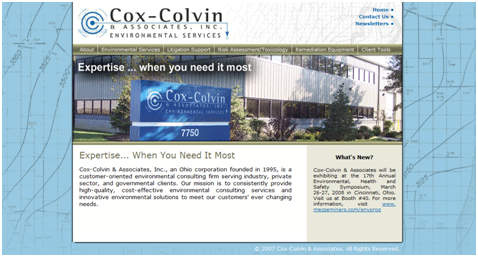Wednesday, February 29, 2012
EPA's FY2013 Budget Released - More Cuts on the Way
On February 13th, the Obama administration proposed a FY 2013 budget of $8.344 billion for the EPA. The proposed budget is $105 million below the current enacted 2012 level, and represents the third year in a row of decreasing EPA budget. EPA's largest budget decrease ($37.4 million) will come from the Superfund program, with the majority of the cut coming from the remedial cleanup program.
Monday, February 27, 2012
EPA Releases Long-Awaited Final Health Assessment for PCE
On January 10, 2012, EPA posted the long-awaited final health assessment for tetrachoroethylene - also know as perchloroethylene (PCE) - to EPA's Integrated Risk Information System (IRIS) database. PCE is a common chemical solvent and ubiquitous groundwater contaminant. The final health assessment concludes that PCE is a "likely human carcinogen". The document also provides toxicity values that will be used in revising the Maximum Contaminant Level (MCL) for drinking water, establishing new cleanup levels at sites where PCE is a contaminant, and evaluating whether to propose additional limits on the emission of PCE in the atmosphere.
Labels:
IRIS,
MCL,
PCE,
tetrachloroethylene,
VOC
Thursday, February 9, 2012
VAP Soil Classification, Description, and Logging Short Course
Yesterday, Cox-Colvin & Associates hosted a very successful soil classification, description, and logging short course. The short course, which was provided free of charge by Jeff Martin of Ohio, EPA, was well attended by not only Cox-Colvin staff, but by a number of other area consulting firms. The course was meant as an introduction/refresher on proper techniques for completing soil descriptions during drilling and investigation activities. Participants were introduced to ASTM Standard D 2488-Standard Practice for Description and Identification of Soils (Visual-Manual Procedure) which is based on USCS soil description methods. The USCS method was also compared to the USDA soil texture method preferred by soil scientists, as well as Ohio EPA vapor intrusion regulators. Afternoon activities included a texturing exercise with calibrated soils and a drilling demonstration by EnviroCore Inc., to allow the class to test the soil description methods from the morning sessions. Overall, the class was very well presented and received, and I think everyone came away with a better understanding of how to use both the USCS and USDA systems to complete accurate soil descriptions in the field.
Subscribe to:
Posts (Atom)




